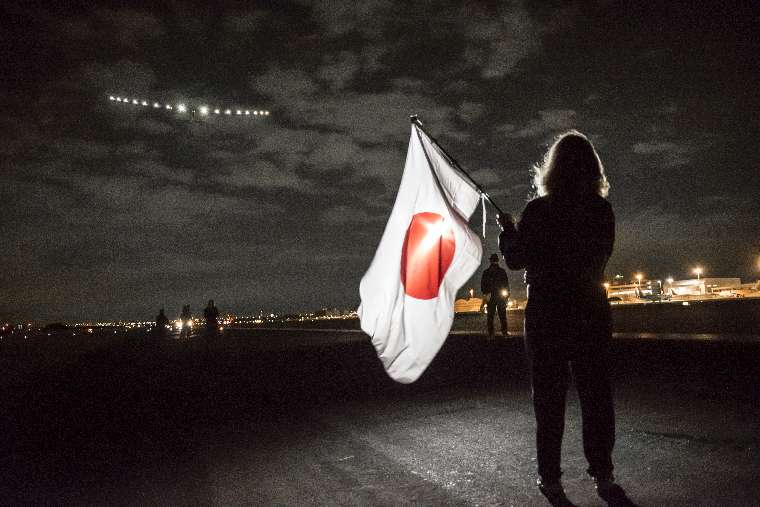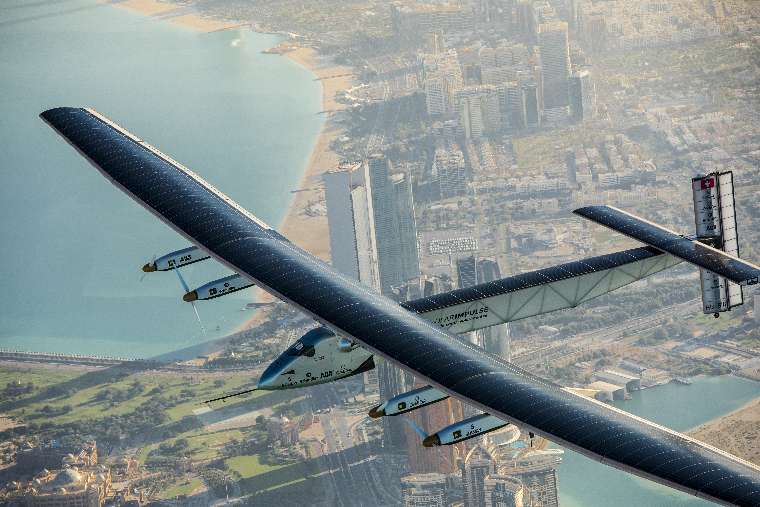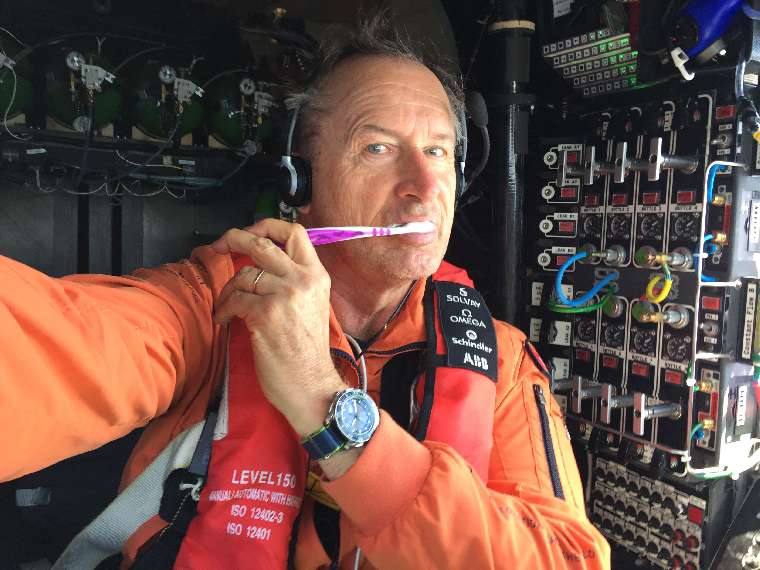
The first solar-powered flight across the Pacific Ocean is now past the point of no return. Pilot André Borschberg now must commit to flying five days and nights until he lands in Hawaii.
What better way to demonstrate the importance of the pioneering, innovative spirit than by achieving “impossible” things with renewable energy - and by highlighting new solutions for environmental problems?
With this in mind, Solar Impulse launched the global campaign #FUTUREISCLEAN.
If technological solutions exist allowing an airplane to fly day and night without fuel, imagine the potential of similar technologies in helping us in our daily lives with energy savings andreducing C02 emissions. "We would like to capitalize on the tremendous media coverage of Solar Impulse flying around the world to promote the various social and economic benefits our planet can derive from a clean future! Only a significant worldwide support will push governments to replace old polluting technologies with clean and efficient technologies.
This is what we want to create throughout our solar powered Round-The-World Flight!" says Bertrand Piccard, pilot and founder of Solar Impulse. Piccard is also known for completing the first hot air balloon flight around the world.

Solar Impulse 2 takes off to Hawaii. Photo credit: Solar Impulse
Support the campaign by registering on www.futureisclean.org
“The question facing us today is not so much whether man will be able to go even further and people other planets, but how to organize ourselves to make life on earth more and more worthy of living”, August Piccard declared in 1931 following his first balloon ascent into the stratosphere. What could be more logical, seventy years later, than that his grandson should launch a project that combines scientific exploration with the promotion of renewable energies?
The idea of Solar Impulse came to Bertrand Piccard following the first round-the-world balloon flight with Brian Jones in 1999. It was the realization that a lack of fuel could have caused his adventure to fail that led him to promise to circumnavigate the world a second time, but this time without fuel or polluting emissions.

Solar Impulse's ultimate adventure: a round-the-world flight. Photo credit: Solar Impulse
After the take-off on 9th of March in Abu Dhabi, the team of Solar Impulse 2 had to stopover in Japan and wait several weeks for a good weather window to cross the pacific. Finally, yesterday 18.00 UMT, André Borschberg took off successfully. The relief about the continuation of the journey was noticeable in the whole team; Betrand Piccard: "The point of no return for this flight to Hawaii was also the point of no return for the entire project."

Pilot André Borschberg on board of Solar Impulse 2. Photo credit: Solar Impulse
The flight to Hawaii will last around 120 hours and it will be the longest flight ever made by a solar-powered airplane in terms of both duration and distance. The pilot will be exposed to extreme conditions during the next leg to Hawaii, living in the confinement of a 3.8m3 cockpit. He will be facing many human, technical and operational challenges which have been carefully researched, developed and simulated, and will be in constant communication with the Mission Control Center.
During the coming months, Piccard and Borschberg will continue the journey and stop in Midwestern United States, New York, Northern Africa or Southern Europe before attempting to return to Abu Dhabi having travelled 35,000 kilometers around the globe, accumulating 500 flight hours over five months to spread the message that clean technologies can achieve the impossible.



